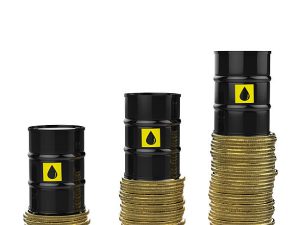Oil prices rose on Monday, recovering a measure of recent losses as investors bet that an economic reopening in China and a less hawkish rhetoric from the Federal Reserve will help spur a recovery in crude demand this year. China reopened its international borders for the first time since 2020, a clear indication that the country intends to pivot away completely from the strict zero-COVID policy that ravaged local economic growth over the past three years. Oil markets are betting that this reopening will spur a sharp recovery in demand, as more portions of the world’s largest crude importer spring back into pre-pandemic levels of production. Some analysts forecast that crude prices could surge to as high as $140 a barrel this year on a recovery in Chinese demand. Brent oil futures rose 0.8% to $79.23 a barrel, while West Texas Intermediate crude futures grew 0.7% to $74.31 a barrel by 20:26 ET (01:26 GMT). But both contracts were nursing their worst weekly loss in a month, tumbling nearly 9% in the first trading week of 2023. While economic growth in China is expected to eventually rebound this year, the country is still grappling with its worst-ever COVID-19 outbreak, which threatens to overwhelm its healthcare system and potentially disrupt economic activity even further.

This Notion, Coupled With a Warning On a Global Recession.
weighed heavily on crude prices in recent sessions. Still, oil markets were also supported by hopes that the Federal Reserve will reverse its hawkish stance in the coming months, as data on Friday indicated further cooling in the U.S. jobs market. A slower pace of rate hikes by the Fed is expected to ease some pressure on the U.S. economy and support crude demand. Oil consumption in the world’s largest economy remained robust through December, as the holiday season and cold weather pushed up gasoline and heating oil demand. But this provided limited support to crude prices, as economic indicators showed further cooling in the U.S. and other major economies. Focus this week is on U.S. consumer inflation data, which is expected to factor into the path of U.S. monetary policy. The U.S. Department of Energy recently rejected a bid from companies to begin restocking the country’s Strategic Petroleum Reserve from February, stating that crude prices were still too high. The U.S. government has signaled that it will only begin restocking the reserve when oil hits $70 a barrel.















